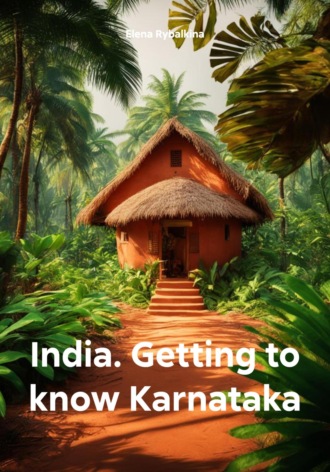
Полная версия
India. Getting to know Karnataka

Elena Rybalkina
India. Getting to know Karnataka
Chapter 1. Preface
In recent years, people around the world, including Russia, have been discovering yoga, and with it, immersing themselves in awareness and religion. Hinduism is capturing the minds of young people and India has become one of the favorite travel destinations.
I was no exception and went to India in search of adventure, my true path and answers to my questions.
For three years, I visited many cities in different states of India and visited both well-known places and those that not every local resident knows about. You won't find some of the objects I've described in any of the classic guidebooks.
In this guide, I will share with you the most colorful, in my opinion, places in the state of Karnataka, which, in my opinion, are simply necessary for all lovers of adventure and souls eager to embark on the spiritual path. Visiting these places, you will feel the taste of India and fall in love with this ancient and holy country forever.
The guide describes both natural attractions and temples of various religions, as well as forts. The guide also contains stories and legends of Indian mythology, as well as my impressions of the places visited.
When writing this guide, I was based on historical facts, the stories of local guides and Russian-speaking guides, and of course on my feelings as an individual traveler who looks everywhere and everywhere, where you can and where you can't, thanks to which I managed to see what an ordinary package tourist will never see. I must say right away that not all the sights of the state of Karnataka are described here, but only those that I have personally visited and heartily recommend to visit.
Chapter 2. Preparing for the trip
What do you need to do to make your trip comfortable?
India differs significantly from European countries in terms of compliance with sanitary standards. Therefore, if you are afraid of catching any infection, it is better to get vaccinated before traveling. It is necessary to be vaccinated primarily against dysentery, hepatitis A and B, malaria, typhoid fever and cholera.
Travel insurance is mandatory, especially if you plan to have extreme entertainment and rent a bike. To be honest, for three years, insurance has never been useful to me thanks to a well-assembled first aid kit.
The first aid kit must contain antipyretic, painkillers, medicines for intestinal disorders, adsorbents, anti-allergenic, antiseptics, broad-spectrum antibiotics and drugs that you take on a regular basis.
In India, as in other Asian countries, it is not customary to use toilet paper, so take it with you if you want to save money and not waste time looking for it in markets.
The sun in India is quite hot, so don't forget your sunscreen.
Food in India is very spicy and if your stomach is not used to eating such food, then it is better to take food with you something from the category of doshiraks. But this is not necessary. If you search well and do not limit yourself to the menu, but ask questions to the employees of cafes and restaurants, then you will always find chicken broth, potatoes with salad without spices. And, of course, tortillas.
Chapter 3 You have arrived. Where to run?
The bulk of tourists fly to India at Indira Gandhi Airport in Delhi. Those who travel to the favorite state of Goa since the hippie days will find themselves at Dabolim Airport or at the new airport in the city of Mopa.
After going through all the customs procedures and collecting your luggage, you will need to get your hands on the local currency, the rupees. The exchange rate at the airport is not very favorable, but depending on where you are going next, you may not be able to change your currency anywhere else. By the way, you can also exchange rubles for rupees when departing from Moscow at Sheremetyevo Terminal C Airport.
Where to buy a SIM card? There are several telecom operators in India: Airtel, Idea, Vodafon. In the cities of Karnataka, SIM cards are not sold to tourists willingly, it is better to resolve this issue at the airport. If you still decide to buy a SIM card in the city, then you can buy them on the main street in Gokarna. Take into account the siesta time from 13:00 to 16:00
Next, you need to decide how you will get to the hotel. From the airport, you can order a taxi or get there by public transport. But it is safer to book a transfer in advance.
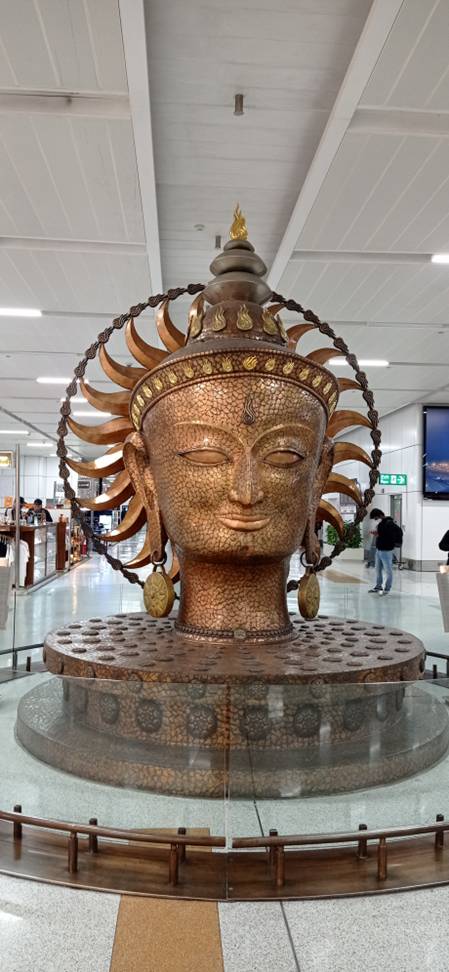
Indira Gandhi Airport Delhi
Chapter 4. Karnataka
India is a densely populated country and its territory is divided into states. There are 28 states in total. In 2023, the population of India reached 1,425,775,850 people.
An ordinary package tourist begins his acquaintance with India with a trip to the Golden Triangle or a vacation on the seaside in Goa. My acquaintance with India began in the state of Karnataka, located in the southwest of India.
The capital of Karnataka is the city of Bangalore.
Karnataka is considered the cleanest state in India, but this does not negate the general rule of hygiene, such as washing hands and drinking only bottled water.
The climate in Karnataka is dominated by subequatorial and tropical monsoon. From June to October, the rainy season comes here. The most favorable period for traveling in Karnataka is from January to March.
The average temperature is +27-+33.
The rainy season is best for visiting waterfalls.
The language of communication is in the state of Kannada, but almost everyone speaks English.
Chapter 5. Gokarna
Most often, tourists travel to Gokarna from the state of Goa.
You can get there by intercity bus from the city of Morgao. Alternatively, you can take the train from Magdaona Station near Morgao. The bus takes about four hours, the train takes 2 hours.
Taxis are available.
The coordinates of Gokarna are 14.5478586, 74.318840999999999.
There are many cities in India that are considered sacred, but Gokarna is the most sacred. According to legend, it was here that the great Hindu destroyer god Shiva was born from the ear of a cow. The city is located on a peninsula shaped that resembles the ear of a cow, hence the name Gokarna. Go means cow, karna means cow. The main population of the town are priests (Brahmins). Therefore, the local population is dressed in white or orange clothes. It is believed that the religious ceremonies held in Gokarna have a special powerful power. Gokarna is a place of pilgrimage for Hindus. It is here, in the waters of the Arabian Sea, that they perform ablutions.
The main temple of the city is Mahabaleshwar, where Hindus gather to worship the Shivalingam, which is more than a million years old. ⠀
Foreigners are not allowed in this temple, but you can enter the territory. At the entrance lives a sacred humpbacked bull of white color, the size of an elephant.
A few more temples deserve the attention of a tourist: the Ganesha temple, the temple of the nagas (snakes) in which they pray for the birth of children.
Among the narrow streets of Gokarna is hidden the Sacred Lake of Koti Tirtha, which is believed to be filled with water from the Ganges. Brahmins perform ablutions here, it is believed that all men's sins are washed away here.
The lake is deep and a sign warns about this, which says that people drown here every year. There is also a sign warning about the presence of crocodiles. I didn't see any, and during the time we walked around the perimeter of the lake, the crocodiles did not eat a single Brahmin bathing. Also, the remains of deceased relatives after cremation are immersed in the tirtha.
Sacred sites are not just temples. In Gokarna, it is worth visiting the cave "Shiva's Ear".
The path to the cave from Main Beach goes uphill, so it is better to stock up on water. On the way, you need to be careful, as the passage to the cave lies through the bushes and you can easily miss the sign.
The Shiva's Ear Cave is as sacred as Gokarna itself, so it is never deserted. It is said that even at night some people come here to spend the night. The cave is the very place where Shiva came into the world from that very ear of a cow.
The entrance to the cave is low and narrow, so in order to enter inside, we had to let the Hindus come out of there. From above, the cave is illuminated by natural light by a small round hole.
Inside the cave there are not very pleasant representatives of the fauna, namely huge cockroaches.
Coordinates: 44°54'21.4"N 35°08'42.9"E
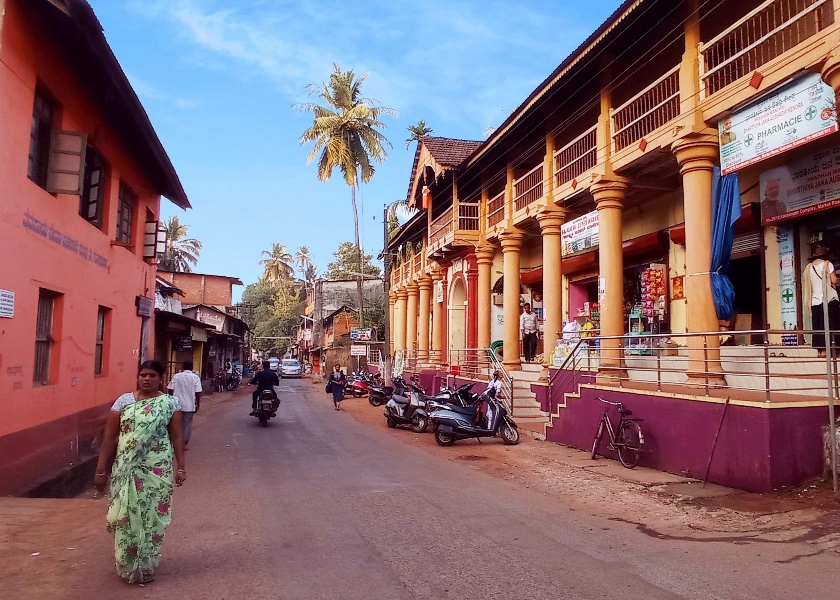
Gokarna. Avtomobilnaya ulitsa
Chapter 6. Murdeshwar. What is hidden inside the tallest statue of Shiva in the world
⠀
The city with the strange name of Murdeshwar attracts with its unique attraction temple complex with its second largest statue of Shiva in the world.
A trip to Murdeshwar can be combined with a trip to Gokarna.
You can get to Murdeshwar from Goa by train, it will take 3 hours 20 minutes or by taxi.
Coordinates: 14.094804, 74.488564
You will definitely not get lost in Murdeshwar. The statue of the four-armed Shiva will look at you from all sides. To say that the statue is large is to say nothing. Its size is amazing long before you approach it. Standing below under this power, you feel like a small bug. The height of this giant statue is 37 meters.
Passage inside exclusively barefoot on hot stone steps. Inside the statue there is a museum-cave dedicated to the Indian epic.
The figures in the museum are made of wax in human size and tell about the ancient legend of the magic stone atma lingam, which the ten-headed king Ravana, who ingratiated himself with Shiva, wanted to take possession of. As usual, the legend is supposed to have a good ending, so the stone was saved, but the evil king threw it to the ground in the town of Gokarna. The stone split into three parts and cities were formed in the places where the fragments fell. One of them is Murdeshwar.
By the way, the statue of Shiva changes the expression of the face in different lighting. Take a closer look.
Around the statue of Shiva, you can see a beautiful park and huge sculptures of the Sacred Bull Nandi, a chariot with the gods Arjuna and Krishna, and a huge golden sun symbolizing the god Surya. Going down the steps, you will find yourself at the no less significant and majestic place of the gate tower Gopuram. Gopuram, like the statue, is the tallest. Its height is 75 meters. Inside, the tower is equipped with elevators that can be used to climb to the very top to the observation deck. The views from the height are worthy of fifteen rupees for the entrance. Going down, you can take your time to see the elephants standing at the entrance in their full size. ⠀
In a city that is located on the coast, it is impossible to pass by the beach. Hundreds of boats are parked on one side of the coast. Residents of the city are mainly engaged in fishing. The other part of the coast is beach, where Indians conduct a brisk trade no worse than on the once famous Cherkizon. This is the dirtiest part of the coast.
In the past, Indians used a banana leaf instead of plates for eating, which was thrown away after eating. Centuries-old traditions have been introduced into modern life and now Hindus habitually throw everything that cannot be used on the ground.
You can dine at the Naveen Beach Restaurant, which is located on the opposite side of Gopuram on the coast.

Murdeshwar. View of the Shiva Temple from the promenade
Chapter 7. The Lost Kingdom of the Jains
Pepper Queen Chennabhairadevi not only built the Mirjan Fort and conducted a successful spice trade, but also practiced Jainism and built many Jain Basadi in Karnataka.
My curiosity and thirst for adventure left me with no choice but to go in search of the lost kingdom of the Jains. All that remains of the kingdom is an ancient basadi and various artifacts dug out of the bowels of the earth.
The entrance to Chaturmukha Basadi is not always open, and the possibility of getting inside always remains at the mercy of the universe. I was lucky: the doors to the temple were open. Nothing remained of the Jain kingdom for seven centuries. Only the basadi temple, a well and a couple of buildings have been preserved, in which archaeologists store the artifacts found. ⠀
Chaturmukh is translated as four-faced, so the structure of the temple is absolutely symmetrical and has four entrances leading to Garbhagriha. Garhagriha has four separately seated sculptures of Tirthankara, facing four exits. Tirthankaras symbolize the comprehensive knowledge of the cosmos. It is surprising that the temple is built of carved granite rocks without any binding material. The Jains who lived in this place preached no harm to any living being. They observed strict asceticism, their old people passed away, refusing to eat. In order not to accidentally swallow some midge, Jains wear bandages on their faces. They walk the streets with a broom so as not to crush a living creature.
You can get to the temple from the city of Karkala by car or taxi.
Coordinates: 14°13′43.4"N74°39′53"E / 14.228722°N 74.66472°E / 14.228722; 74.66472
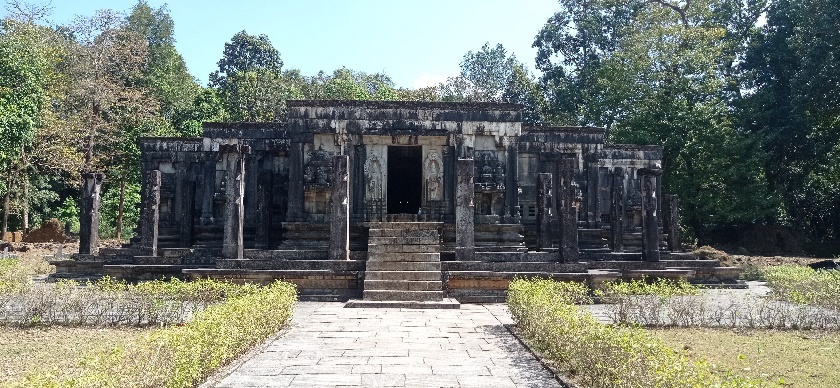
Chaturmukha Basadi Main Entrance

Chaturmukha basadi from the end
Chapter 8 Green Fort Mirjan
Little-known and dilapidated sights attract me no less than sights that have retained their integrity and attract crowds of tourists. We visited one such place in the vicinity of Kumta. ⠀⠀ The Mirjan Fort does not look like a defensive structure at all, rather like a castle. The Queen's Castle.
In part, this is true. According to one version, the fort was built to store and guard spices that were sent along the river to Europe. The exact date of construction of the fort is not known. According to some sources, it arose in the XIII century, according to others in the XVI and restored in the XVII.
The plaque installed at the entrance claims that it was still in the XVII. This fact causes admiration and bewilderment at the same time. The fort was built of volcanic stone. Quite a loose substance. How it has survived to this day is a mystery. Although it is not known what remained of the original after the restoration of 2000-2001, when the laterite stone was replaced. The original construction of the fort is attributed to Queen Chennabhairadevi⠀, who ruled in these places for 54 years and also lived in the fort. The queen successfully traded in the best black pepper and received the nickname "Pepper Queen". Pepper in the XVI century was valued more than gold and had to be guarded. In addition to pepper, wild nutmeg, saltpeter, cassia and betel nut were stored in the fort. During the reign of the pepper queen, matriarchy reigned in South India. ⠀
After being defeated in the Talikota War, during which the Vijayanagar Empire was defeated, the queen moved from Mirjan Fort to safety on an island in the middle of the Sharawati River. According to another version, she was captured and met her death in prison.
After the death of the last ruler, Bednur, in 1755, his wife took over the administration by representing her 17-year-old adopted son, Chanbasavia. As her adopted son objected to her having a "lover", she killed him. This led to a revolt of the agitated local population, and the Marathas took advantage of the situation, and took advantage of the situation, the Marathas captured the fort. In the 18th century, the fort was captured by the British. The fort was maintained by the British until 1947, when India did not gain independence. ⠀
Coordinates: 14.493267, 74.423750
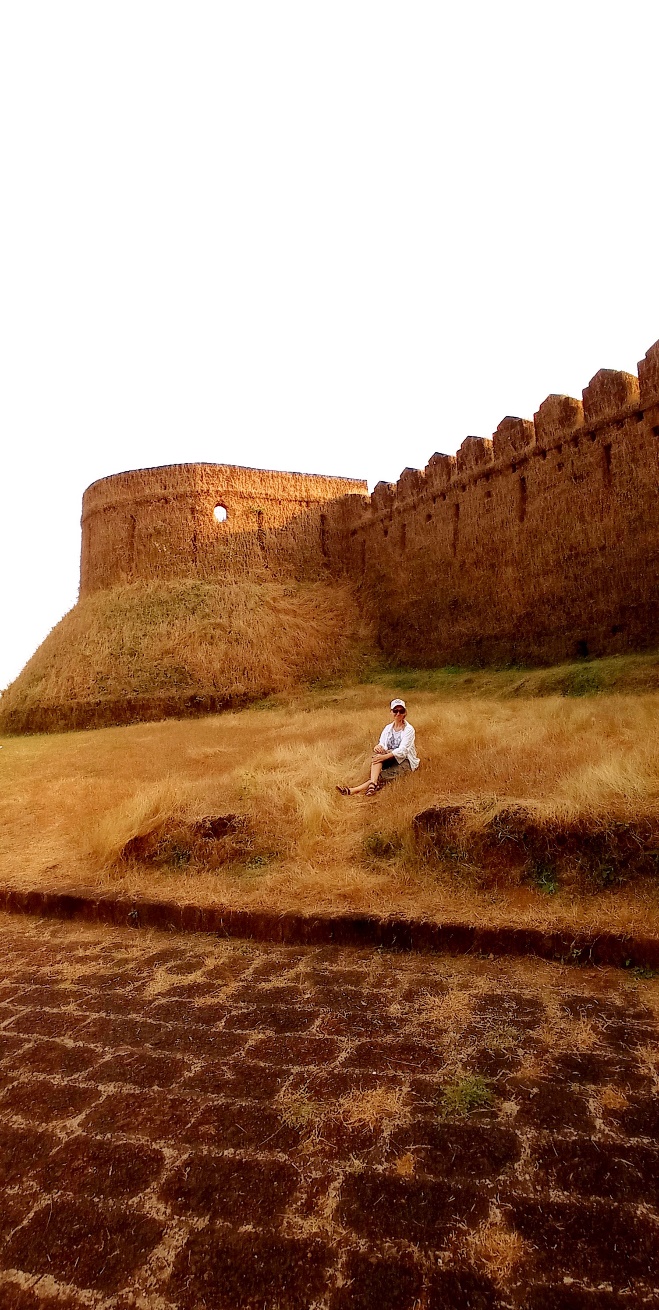
Mirjan Fort
Chapter 9. The flooded church of Shettihalli
Temples are often closely associated with mysticism. What can a church that rises above the water at a certain time?
A mystical miracle hiding in the expanses of the Indian city of Hassan, hovering above the water, is the French Christian church of Shettihalli. ⠀
During the monsoon season, the church is submerged in the water and surfaces in the summer. When I learned about this miracle, I was ready to sail there on anything, even on a basin. Not the most convenient transport, but very romantic.
The mysterious Gothic church was created to serve the Christian communities living in Karnataka in 1830 by French missionaries. And a hundred years later, civilization in the form of a broken dam forced people to leave, leaving this grandiose building at the mercy of nature.
As I said earlier, the flooded church now has a rather mystical appearance and, if you come there after sunset, you can probably tickle your nerves, taking the silhouettes of the birds living in it for ghosts. And before sunset, floating between the arches of the church, reflected in the water and seeming golden in the rays of the setting sun, you feel incredible calm and peace.
You can get to the church from the city of Khasan by bus, warning the driver to make a stop at the church and walk 10 minutes.
Church coordinates: 54.716354, 20.524586
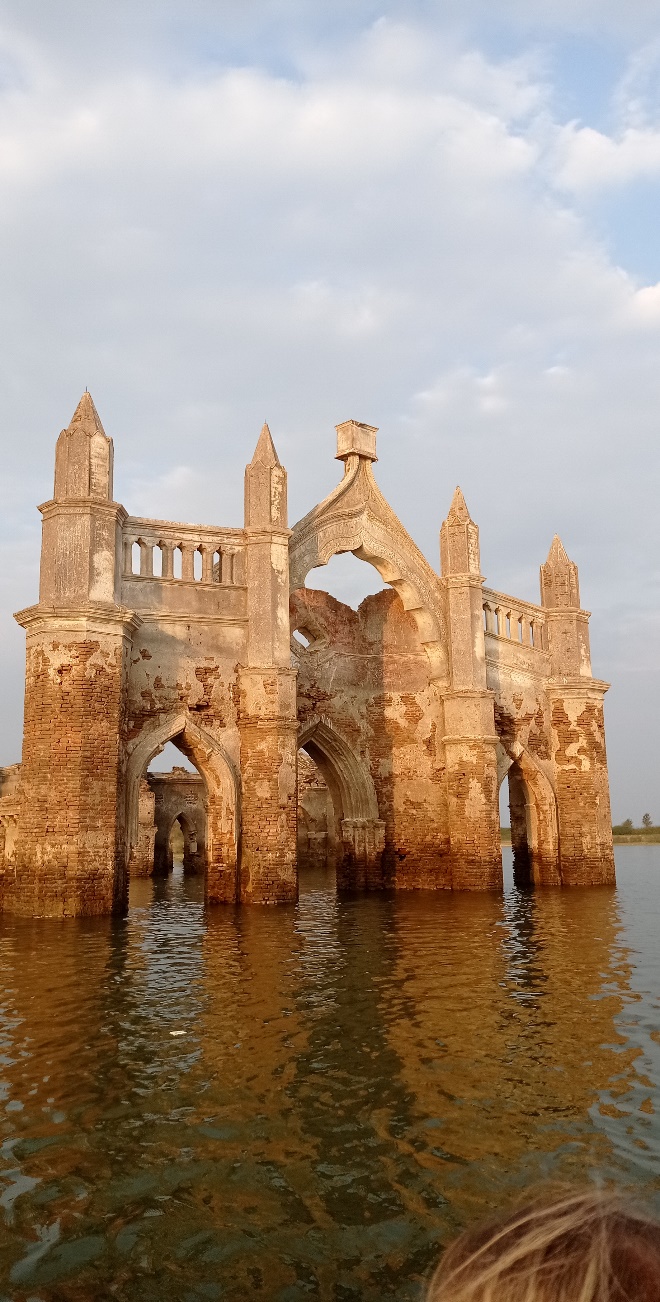
Shettihalli Church
Chapter 10. Belur. Chennakeshava Temple
Various architectural mysteries always captivate the minds of mankind. They make you freeze as if for a moment petrified next to exquisitely processed massive stones. ⠀
Lace Hindu temples remain a centuries-old mystery for modern man. Huge carved columns and openwork elements of temples cause heated debates about how ancient Indians could sculpt such beauty with a hammer and chisel. Or did they still have lathes or some other more cunning tools? ⠀
Belur is the second capital of Hoysala, which received refugees from Halebid during the war with the Muslims. It took 103 years to build the Chennakeshava Temple in Belur. It was built by the Hoysala king Vishnuvarhana. Architectural style: Hoysal. At the base, the temple resembles a star.
The walls of the facades are made with horizontal friezes showing scenes from the Puranas, Upanishads, Ramayana and Mahabharata.
Of the sculptures, the figures of dancers – apsaras – stand out. Especially famous is the sculpture of Drapana Sundari – a beauty looking in the mirror. Apsaras from Belur Temple, Karnataka 1117 CE
Demigoddesses in Hindu mythology, spirits of clouds or water. Beautiful women, in rich clothes and wearing jewelry. In Vedic mythology, they are the wives and lovers of the Gandharvas. Celestial dancers and courtesans. Also, according to legend, apsaras appease heroes who fell in battle in the paradise of Indra.
There are several versions of the origin of apsaras. In the Ramayana it is mentioned that the apsaras arose from the churning of the ocean by the gods and asuras, neither of them wanted to take them as wives, and they began to belong to everyone. According to other legends, the most famous apsaras (such as Menaka, Urvashi, Tilottama, etc.) were created by Brahma, and the rest were the daughters of Daksha. Apsaras, who were in the direct service of the gods, were often used by them to seduce ascetics or holy hermits who, through asceticism, could become equal to the gods. The figures are well detailed, but, unfortunately, elements of some sculptures are lost.
Inside, the temple is supported by 22 columns made of solid stone. The central pillar of Narasimha (avatar of Vishnu) depicts more than a hundred deities. The Narasimha Pillar, made of soapstone, once had the ability to rotate. When you touch the pole, you get the impression that you are touching soap. The physical properties of soapstone are softness, non-porosity, low electrical conductivity and high heat capacity, heat resistance and resistance to acids and alkalis.
The temple is quite dark, so Indian guides periodically turn on a lantern to illuminate the carved ceilings and the murti of Vishnu. Vishnu holds a conch shell in his upper right hand, a chakra (disk) in his upper left hand, a lotus in his lower right hand and a club in his lower left hand. On either side are his consorts Sridevi and Bhudevi.
Inside the temple, at one of the entrances, you can see Ananta-shesha – one of the forms of God in Hinduism and Vedic religion – a thousand-headed serpent, the king of all nagas. He is depicted with 5-7 heads, and most often with many heads, on each of which he wears a crown decorated with precious stones and patterns.
The temple was used not only as a religious building, but also for meetings of the rajah and his advisers, and justice was also administered here.
On the territory of the temple there is a pond with fish and turtles.
You can get to the temple from Belur.
The most convenient flight is from Mysore. There are also flights from Goa to Bangalore, then by car or taxi.
It is convenient to combine a trip to Belur with a trip to Mysore.
Конец ознакомительного фрагмента.
Текст предоставлен ООО «Литрес».
Прочитайте эту книгу целиком, купив полную легальную версию на Литрес.
Безопасно оплатить книгу можно банковской картой Visa, MasterCard, Maestro, со счета мобильного телефона, с платежного терминала, в салоне МТС или Связной, через PayPal, WebMoney, Яндекс.Деньги, QIWI Кошелек, бонусными картами или другим удобным Вам способом.

